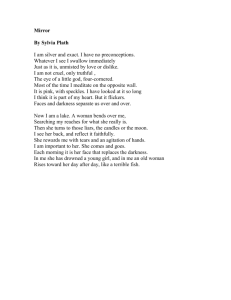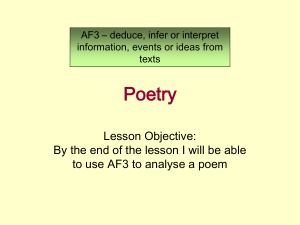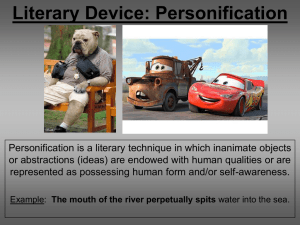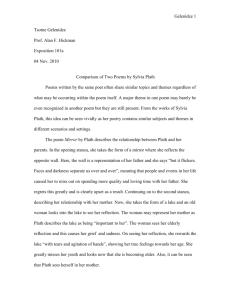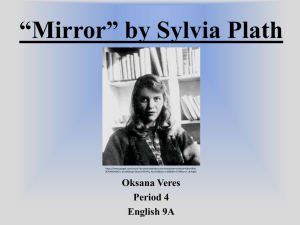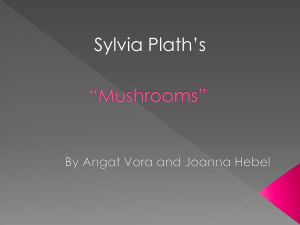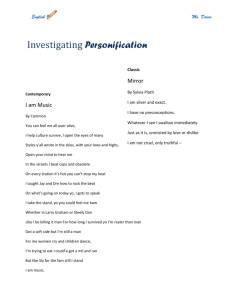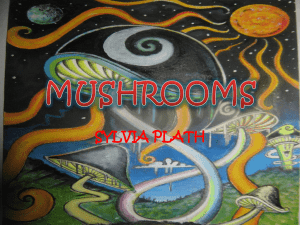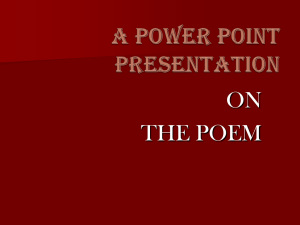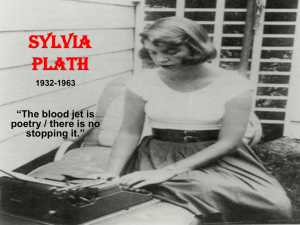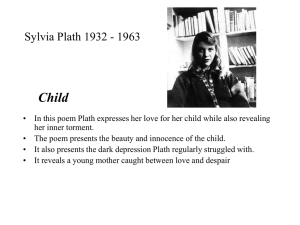Mushroom - San Juan
advertisement
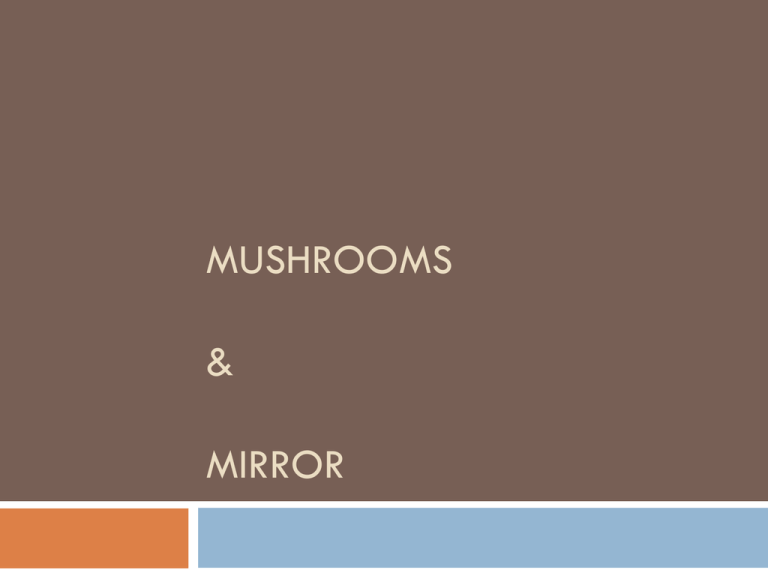
MUSHROOMS & MIRROR Mushrooms -by Sylvia Plath 1959-60 A General understanding… Written in 1960, "Mushrooms" is a striking social commentary on the struggles of women to overcome the restraints of the housewife image. Plath parallels a mushroom's growth, determination, and population expansion with women's fight for notability, independence, and as she sees it, inevitable control of the majority. By using a metaphor likening mushrooms to women, an idea which is not so far-fetched, she bites back at male dominance and with brutal honesty displays the real position of women in society. Main Theme… The main themes being that of the upcoming rise of Woman’s rights with ‘We are shelves, we are Tables,’ highlighting the view held by men in society at that time of women as purely domestic objects and it is also laced with echoes of the birth of her first child. Other notable observations… The use of the Mushroom metaphor fits perfectly with the image of a pregnant woman. ‘Nobody sees us, Stops us’ remarks on the two things, the fact that it is often not until late into the pregnancy that it becomes obvious that one is pregnant and two, babies have a habit of slipping past us unnoticed. ‘Soft fists’ is surely alluding to the kicks the mother feels during pregnancy. ‘Earless and eyeless, Perfectly voiceless,’ is another beautiful reference to the growing fetus. Structural observations… “Mushrooms” is a masterfully structured poem, which looks to follow the Octet Rule with three lines in each stanza and five syllables in each line (3+5=8). Plath uses alliteration ‘Soft fists insist’ (my personal favourite) and assonance ‘very Whitely, discreetly, Very quietly’ to great effect, causing the reader of the poem to read it slowly and steadily. The use of this technique adds to the quiet stealth-like feel of the poem. The repetition of vowels gives the poem a ‘spongy’ feel ‘Our toes, our noses’, whilst the use of consonants abruptly stops the sound with the reader’s tongue ‘Nudgers and shovers’. Devices to note in both poems… Enjambment Anaphora/Repetition Assonance/Alliteration Personification Metaphor/similie Adverb Usage Internal Rhyme Reflection Assignment: 1. What is the poem about- briefly 2. What effect do you think the writer is intending 3. How is that intended effect achieved? Mirror -by Sylvia Plath 1960 A General understanding… The mirror that played a key role in “Morning Song” reappears as the title of this poem - where maternity plays no part unless one wants to include it as a factor in the aging process and the loss of maidenly beauty. In "Mirror," we are addressed by an inanimate object, which sets out to define itself and its function and does so with the exactitude that is a part of its nature. It has no preconceptions because it is without memory or ability to reason. It is omnivorous, swallowing everything it confronts without making judgments that might blur, mist or distort. It is god-like in its objectivity and lack of emotional response. Most of the time it meditates on the opposite wall, faithfully reproducing its colors and design, until darkness supervenes or faces intrude. These happenstances recur with regularity. Main Theme… Simply stated, there are a few themes/motifs present in this work. Appearances, women/femininity, time, and transformation More eloquently stated: If you want to know the truth, be as objective and detached as a mirror. It reflects exactly what it sees without hiding flaws. Whether you are evaluating an actor's performance, a meatloaf recipe, a religion, a political system, a Miss America candidate, a scientific theory, or yourself or another person, you must be "unmisted by love or dislike" (line 3). Other Notable observations… Certainly the poem's persona is Sylvia Plath. However, she employs hyperbole in suggesting that she is an aged crone looking into a mirror. Plath committted suicide at the age of 31, still a beautiful woman. The "terrible fish" of haggard age is still deep down in the pool of the mirror. Structural Observations… Mirror is a lyric poem in free verse Free verse is a type of poetry with rhythms based on words patterns rather than meter It is also written in the first person point of view Fine Points of diction… Line 1, I am silver and exact: The word silver here refers to the coating on the back of a glass mirror. It can be made with liquefied silver or aluminum applied to a smooth glass plate. A mixture of silver nitrate and ammonium hydroxide can also be used to make the coating. Line 3, unmisted: Not influenced; not prejudiced. Line 5, eye: The reflecting surface. Line 8, it flickers: The wall alternately disappears and reappears as people pass in front of it. Line 12, those liars, the candles or the moon: Because candles and moonlight provide only dim illumination, they "lie" about what they see. Resources Cynosure. 12 September 2011. Web. 21 August 2012. http://www.postpoems.org/authors/cynosure/poem/905189 Fernquist, Jessica. ‘Assessing Sylvia Plath’s Poetry’. Helium. Created on: January 02, 2007 Last Updated: May 21, 2007. Web. 16 June 2012. http://www.helium.com/items/110273assessing-sylvia-plaths-poetry Wood, Kerry Michael. ‘How Sylvia Plath Successfully uses metaphors in her poetry”. Created on: 10 September 2008 Last Updated: 24 January 2009. Web. 16 August 2012. http://www.helium.com/items/1176699-precision-anddexterity-of-the-use-of-metaphor-in-sylvia-plaths-poems-mirrorand-metaphors?page=3
